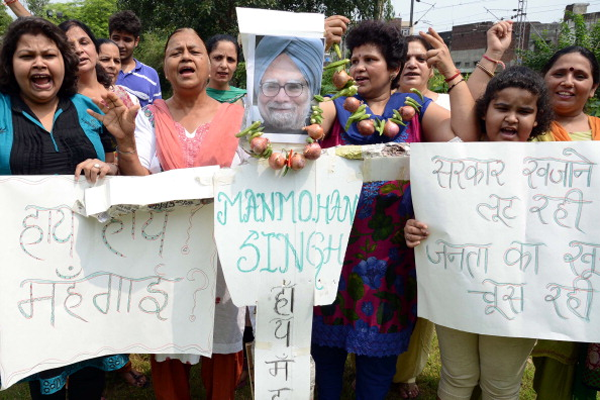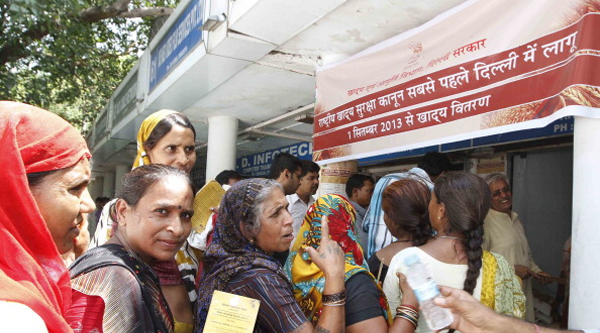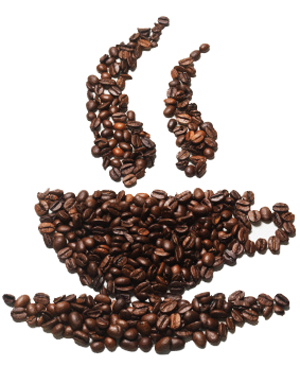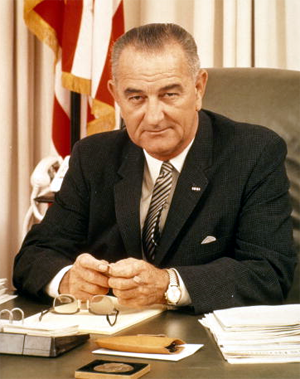Dec 27, 2025
Dec 27, 2025
by Sakshi
Fall and Fall of Rupee
Promise the Moon
C for Kick
Those Who Led the March
LTA: A Long-lasting Racket
Think it Through
Fall and Fall of Rupee
Not just the financial markets, every walk of life is deeply concerned about the fate of the Indian rupee, plunging by the day to the delight of those who had stashed funds abroad. Last week when it sank to a new low of 68.82 rupees per dollar, heading to the sacred Christian figure of three score and ten, the sliding currency aroused deep concerns − mock and genuine, and even jokes. I saw an interesting cartoon of P Chidambaram proudly displaying a card how he has successfully reduced the price of onions − just One Dollar per kilo. That looks after the market variations of both the commodities and the currency.

UPA thought it had, under the enlightened guidance of an economist Prime Minister, eventually discovered the ever-sought Money Tree. So, its Government distributed one free carrot after another. The latest is almost-free food. Very unfortunately, however, everybody is now deeply concerned because the Tree has started looking bare after shedding its leaves with the arrival of an exceptionally early autumn. I shudder to think what will happen when winter sets in.
Did we heed the age-old warning:
For They That Sow the Wind Shall Reap the Whirlwind?
If you’re in politics, promise the electorate the moon before announcing the elections. And that’s what our beloved leader Sonia Gandhi is doing. Rice for Rs 3 a kilo and wheat at Rs 2 for 75% of the rural and 50% of the urban population.
Can you think of a more benevolent mai-baap Sarkar? I cannot.
But where would Rs.1,25,000 crore needed for implementing the scheme come from? My economist friends tell me: Don’t you know the Government has a Printing Press at Nashik. It is always ready to work all the three shifts 24X7 and 365 days a year for improving the aam admi’s lot.

Whatever might be the short-medium-and-long-term consequences of this money printing spree, the BJP and other opposition parties handed on a platter to the Congress its vote-catching poll plank for 2014. Not one single opposition MP demanded a convincing proof from the Government that the CAD will be maintained at existing level and under no circumstances allowed to increase which is inevitable.
Did anyone demand a proof of cuts in expenditure elsewhere − for example in the pay and allowances of MPs and all Government functionaries – to provide funds for Food Security. The most worrying attribute of the debate was how BJP leadership showed itself utterly devoid of the thinking faculty.
I have given up reading disillusioning medical literature that tries to convince that caffeine even in moderate quantity is harmful. First, I was persuaded to give up smoking because of the supposedly harmful effects of nicotine. Then the good health advocates attempted to target alcohol, pointing out its long-term addictive effects.
 Now it’s the turn of coffee on which I depend for the morning wake-up call and the mid-morning kick to face the humdrum of life.
Now it’s the turn of coffee on which I depend for the morning wake-up call and the mid-morning kick to face the humdrum of life.
When it comes to caffeine, all coffees are not created equal. According to a recent report from the Center for Science in the Public Interest, popular brands varied widely when it comes to the jolt they provided. McDonald’s, for instance, had 9.1 mg per fluid ounce, while Starbucks packed more than double of that at a full 20.6 milligrams. Here’s clinching evidence if you’re contemplating a change-over.
According to the FDA, 80 percent of U.S. adults consume caffeine each day, with an individual intake of 200 mg. To put that in real world terms, the average caffeine-consuming American drinks two five-ounce cups of coffee or about four sodas.
Is there anything like a safe limit in caffeine intake? Yes, 200 to 300 mg per day, according to the Mayo clinic studies.
Let me console myself by asking you a simple question. Which country in the world leads in caffeine intake? I bet my shirt most – if not all − you will answer: the United State of America. Some may even opt for Brazil because it is the world’s largest coffee producer. Or even, Yemen, where coffee first grew.
I’m afraid all the three answers are wrong.
According to a BBC study − and Auntie Beeb, (a hangover for the BBC from the Reithian days) cannot be wrong − Finland takes the crown for the country with the highest caffeine consumption, with the average adult downing 400 mg each day. Is that the reason the Finns talk too much and had to invent Nokia and with that the curse of mobile telephony?
Fifty years ago, on August 28, 1963, Rev. Martin Luther King Jr. led approximately 250,000 people in the March on Washington for Jobs and Freedom. It was to protest discrimination, joblessness and economic inequality faced by African Americans. It featured King's iconic “I Have a Dream” speech and set the stage for monumental changes symbolized by the 1964 Civil Rights Act and the 1965 Voting Rights Act.
Two score and ten years later a black President, Barak Obama paid his tribute in ringing terms. “Because they marched, a civil rights law was passed. Because they marched, a voting rights law was signed. Because they marched, doors of opportunity and education swung open so their daughters and sons could finally imagine a life for themselves beyond washing somebody else’s laundry or shining somebody else’s shoes.”
“Because they marched,” he added, “city councils changed and state legislatures changed and Congress changed and, yes, eventually, the White House changed.” Indeed seldom, indeed, those who sow the crop of idea and change agents live to see the harvest. King was shot dead, but the cause lived on to triumph.
Pray for those who silently suffered all the humiliations heaped on them to take the movement to its logical conclusion. While Mr. Obama’s line about the White House changing was his only reference to his unique place in history, the power of his presence was lost on no one.
 The one person, who hasn’t been given the credit due to him to further most significantly the civil rights movement of the blacks, is President Lyndon Johnson. President Kennedy who heard Martin Luther King address the marchers on that August 28rd morning in 1963 in the White House was shot dead in a few months before any action could be initiated. It goes almost entirely to the credit of Johnson who had the unique knack of getting laws passed by even a recalcitrant Congress who chose to act whereas all his predecessors had only been content to emphasize the importance of doing something before it was too late.
The one person, who hasn’t been given the credit due to him to further most significantly the civil rights movement of the blacks, is President Lyndon Johnson. President Kennedy who heard Martin Luther King address the marchers on that August 28rd morning in 1963 in the White House was shot dead in a few months before any action could be initiated. It goes almost entirely to the credit of Johnson who had the unique knack of getting laws passed by even a recalcitrant Congress who chose to act whereas all his predecessors had only been content to emphasize the importance of doing something before it was too late.
On Jan 23, 1964, the 24th Amendment was seen through, abolishing the poll tax, which originally had been instituted in 11 southern states after Reconstruction to make it difficult for poor blacks to vote.
Next year, President Johnson got passed the Civil Rights Act of 1964, the most sweeping civil rights legislation since Reconstruction. The Act prohibits discrimination of all kinds based on race, color, religion, or national origin. The law also provided the federal government with the powers to enforce desegregation.
Assessing that civil rights laws alone were not enough to remedy discrimination, President Johnson issued Executive Order 11246, on September 24, 1965. This enforced affirmative action for the first time. It requires government contractors to “take affirmative action” toward prospective minority employees in all aspects of hiring and employment. He also signed the Civil Rights Act of 1968, prohibiting discrimination in the sale, rental, and financing of housing.
Altogether, no one could have singly done more for a cause that he sincerely believed in.
Carrying a sane head over your shoulders, would you go from Delhi to Bikaner via Copenhagen? Or travel from Mumbai to Silchar via Dubai? The suggestion is outrageously crazy, you might say. But this is precisely what a couple of top PSU officials have done to claim their annual leave travel allowance (LTA). Suppose the rule merely says once a year you can travel and claim first-class fare from your home town to any destination and back. You can indeed adopt a route of your choice.
It is to ward off this possibly gross abuse of the provision by clever interpreters that our accountant friends added a formidable clause with the above rule − from Point X to Point Y by the shortest land/sea/air route. Now the shortest route is matter of interpretation.
Bizarre examples of LTA abuse surface every year. During the years of my association with our public sector undertakings I was a witness to quite a few novel techniques of pulling a fast one on the authorities. The most common, I discovered, was arranging for a fee, appropriate evidence of travel without setting your foot out. Another common trick of the trade was very frequent change of home address. A dear friend of my mine in the Army if posted in the North gave Nagercoil in remote South Tamil Nadu as his home town. And the day he was posted in Coimbatore, his home address changed to Amritsar.
All said, I love to meet the lady who as per a Times of India report claimed a mere Rs.131,653 for travelling, accompanied by her dear family, from Port Blair to Mumbai via Dubai. I would like to learn about her ingenious travel route. For all you know it might be the simple route of Port Blair to Delhi to Dubai to Mumbai. It’s just a matter of connecting flights.
“Darkness cannot drive out darkness; only light can do that. Hate cannot drive out hate; only love can do that.”
These words of Martin Luther King Jr. are an echo of Gandhi who deeply influenced his thinking as well as that of Nelson Mandela. Isn’t it a case of prophets being honored only abroad?
Images (c) Gettyimages.com
01-Sep-2013
More by : Sakshi